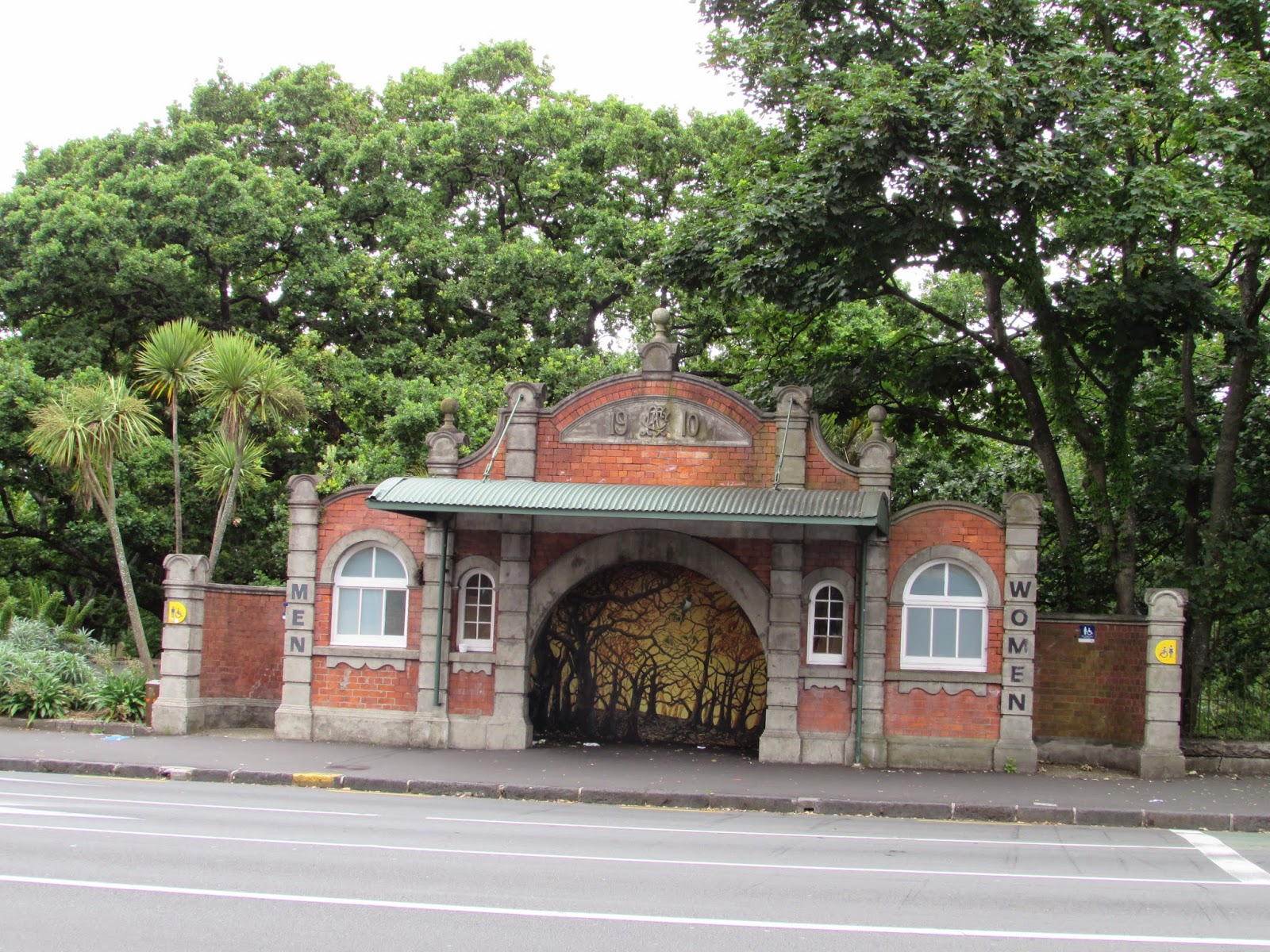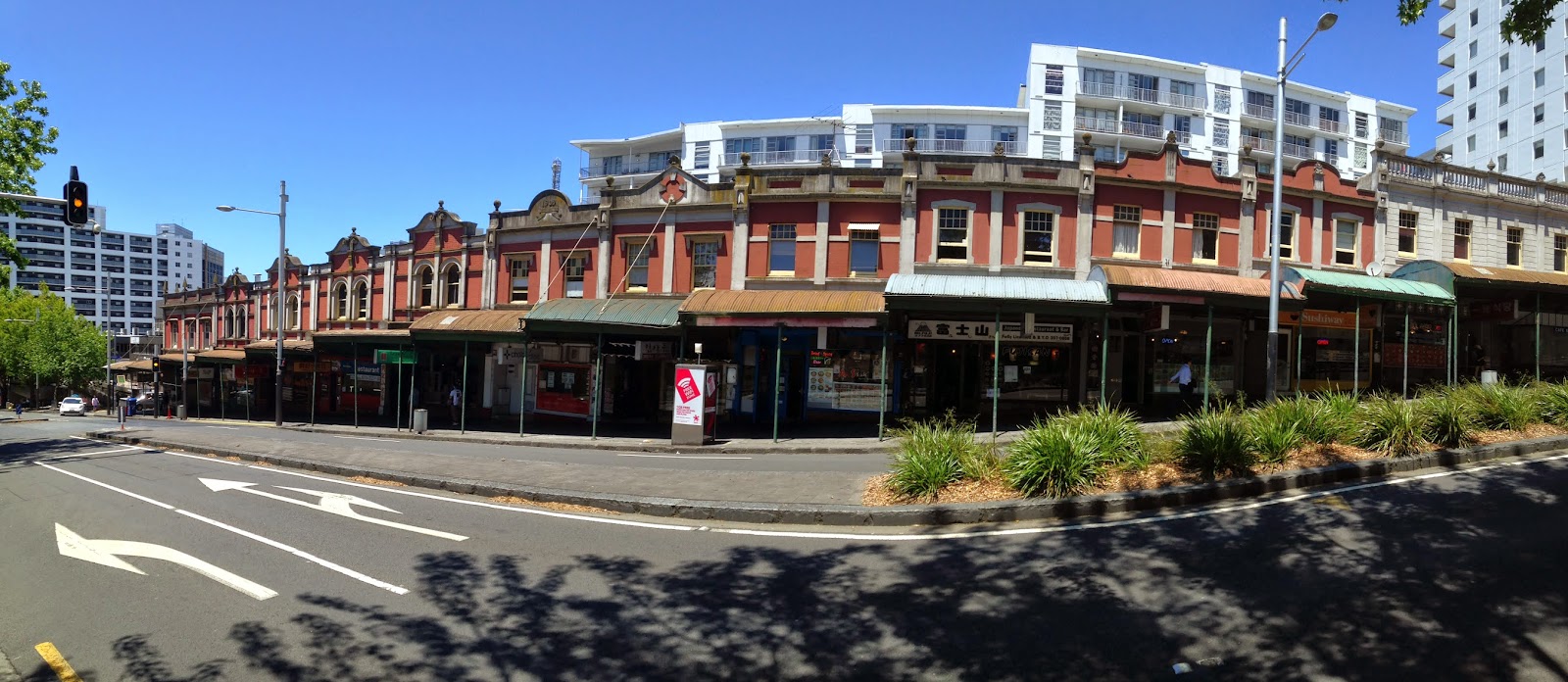One of the great benefits of touring a destination where you
know several people is that they are familiarly with all the shortcuts and have
great insights. It is difficult to make any definitive statements about Hobart
given the limited amount of time I spent in the city; however, my impression is
of a city rich in history and interests. As is my habit, I noticed many of the
smaller historical sites that tell a rich and complex tale of a city, its people
and Tasmania.
 The one destination that I considered imperative was a visit
to the gates of the Beaumaris Zoo. Much like the Berlin Zoo, which I visited earlier
this year, it is a place where the folly of humans has had is duly recorded.
The zoo, which has been closed for more than 75 years, was the site of interesting
stories, such as the attempted escape of a polar bear in 1926. More
importantly, Beaumaris Zoo was the location where the last known thylacine
died in 1936. More popularly know as Tasmanian Tigers, thylacines were
intriguing animals that were drove into extinction. Although there are rumors
and hope that there are a few thylacines wondering around the wilds of Tasmania,
there is very little good evidence to suggest this is the case. The zoo closed the
year following the death of the last thylacine.
The one destination that I considered imperative was a visit
to the gates of the Beaumaris Zoo. Much like the Berlin Zoo, which I visited earlier
this year, it is a place where the folly of humans has had is duly recorded.
The zoo, which has been closed for more than 75 years, was the site of interesting
stories, such as the attempted escape of a polar bear in 1926. More
importantly, Beaumaris Zoo was the location where the last known thylacine
died in 1936. More popularly know as Tasmanian Tigers, thylacines were
intriguing animals that were drove into extinction. Although there are rumors
and hope that there are a few thylacines wondering around the wilds of Tasmania,
there is very little good evidence to suggest this is the case. The zoo closed the
year following the death of the last thylacine.  Another tragic event, commemorated high above the city on trails
of Mt. Wellington (kunanyi), is the fate of George Radford. Competing in a “go-as-you-please”
race to the pinnacle, and return, in September 1903. Radford was caught in
snowstorm and perished. Today, a walking and mountain bike trail that meanders
through a fern forest is named in his honor. As I walked the trail through the
forest, the knowledge that Charles Darwin also walked the same mountain in 1836
gave me much to think about as well.
Another tragic event, commemorated high above the city on trails
of Mt. Wellington (kunanyi), is the fate of George Radford. Competing in a “go-as-you-please”
race to the pinnacle, and return, in September 1903. Radford was caught in
snowstorm and perished. Today, a walking and mountain bike trail that meanders
through a fern forest is named in his honor. As I walked the trail through the
forest, the knowledge that Charles Darwin also walked the same mountain in 1836
gave me much to think about as well.  On a much less somber note, the monuments and signage on
docks of Hobart demonstrates the city has several connections with the rest of
the world despite its remoteness. This is particularly true of the signing
remembering the Jam Factory of Henry Jones. In many ways, the business ethics
and manners mirrored the practices of many of Jones’s contemporary. He was very
successful and his company’s effort meant that fruit grown in Tasmania, turned
into jams and pulp, were consumed around the world. Yet, his treatment of
workers were questionable and reflects many of the excesses of the industrial period.
Along Hunter Street sits the remains of the factory, now repurposed. His
product named, IXL, referred to his personal statement: “I excel at everything
I do.” Yet despite his bravado, Jones’s treatment of workers and questionable business
practices are remembered at the docks as well.
On a much less somber note, the monuments and signage on
docks of Hobart demonstrates the city has several connections with the rest of
the world despite its remoteness. This is particularly true of the signing
remembering the Jam Factory of Henry Jones. In many ways, the business ethics
and manners mirrored the practices of many of Jones’s contemporary. He was very
successful and his company’s effort meant that fruit grown in Tasmania, turned
into jams and pulp, were consumed around the world. Yet, his treatment of
workers were questionable and reflects many of the excesses of the industrial period.
Along Hunter Street sits the remains of the factory, now repurposed. His
product named, IXL, referred to his personal statement: “I excel at everything
I do.” Yet despite his bravado, Jones’s treatment of workers and questionable business
practices are remembered at the docks as well. 













































